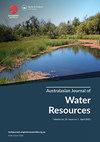2001-2015年澳大利亚新南威尔士州亨特新英格兰地区饮用水质量
IF 2.2
Q2 WATER RESOURCES
引用次数: 1
摘要
摘要本研究的目的是评估饮用水质量验证监测的有效性,作为改进澳大利亚新南威尔士州饮用水质量管理预防措施的一种手段。水采样和大肠杆菌检测数据来自新南威尔士州饮用水数据库。使用发病率比率进行统计分析,以比较收集的样本与根据服务人群(采样充分性)分配的测试之间的关系、大肠杆菌检测以及采样充分性与大肠杆菌检测之间的关系。在研究期间,采样充分性和大肠杆菌检测显著提高。较小种群的采样充分性显著较低(IRR=0.83,p=0.036)。较小群落的大肠杆菌检测显著增加(IRR=4.3,p=0.01)和夏季(IRR=2.7,p=0.001)。采样充分性的提高与大肠杆菌检测的减少之间存在强的负相关(Spearman’s rho=-0.821;p=0.0001)强调了继续援助供水公司实施饮用水管理系统以改善饮用水安全的价值。本文章由计算机程序翻译,如有差异,请以英文原文为准。
Drinking water quality in regional Hunter New England, New South Wales, Australia, 2001-2015
ABSTRACT The objective of this study was to evaluate the effectiveness of drinking water quality verification monitoring as a means of improving preventive measures on drinking water quality management in regional New South Wales (NSW), Australia. Water sampling and E. coli detection data were obtained from the NSW Drinking Water Database. Statistical analysis was performed using Incidence Rate Ratios to compare the relationship between the proportion of samples collected to the tests allocated based on population served (sampling adequacy), E. coli detection and the relationship between sampling adequacy and E. coli detections over time. Sampling adequacy and E. coli detections significantly improved during the study period. Sampling adequacy was significantly lower in smaller populations (IRR = 0.83, p = 0.036). E. coli detections were significantly increased in smaller communities (IRR = 4.3, p = 0.01) and in summer (IRR = 2.7, p = < 0.001). There was a strong inverse correlation between improved sampling adequacy and decreased E. coli detections (Spearman’s rho = −0.821; p < 0.0001). This research has highlighted the value of continued assistance to water utilities in the implementation of drinking water management systems to improve drinking water safety.
求助全文
通过发布文献求助,成功后即可免费获取论文全文。
去求助
来源期刊

Australasian Journal of Water Resources
WATER RESOURCES-
CiteScore
5.10
自引率
21.90%
发文量
25
期刊介绍:
The Australasian Journal of Water Resources ( AJWR) is a multi-disciplinary regional journal dedicated to scholarship, professional practice and discussion on water resources planning, management and policy. Its primary geographic focus is on Australia, New Zealand and the Pacific Islands. Papers from outside this region will also be welcomed if they contribute to an understanding of water resources issues in the region. Such contributions could be due to innovations applicable to the Australasian water community, or where clear linkages between studies in other parts of the world are linked to important issues or water planning, management, development and policy challenges in Australasia. These could include papers on global issues where Australasian impacts are clearly identified.
 求助内容:
求助内容: 应助结果提醒方式:
应助结果提醒方式:


